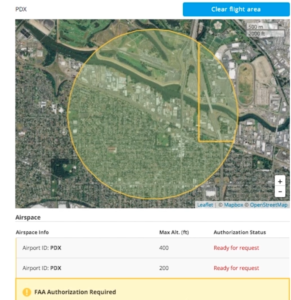
The FAA is inundated with requests for authorizations and lags behind on processing. Pilots committed to flying legally and waiting for authorization sometimes risk losing work to pilots willing to bend the rules. It’s a problem the FAA acknowledges. “Requests have steadily increased over time, and the FAA expects the queue will exceed 25,000 pending authorizations within the next 6 months,” says the FAA. “The volume of these authorization requests has dramatically increased the time between submission and approval of those authorization requests.”
FAA sees these illegal operators as a significant risk to airspace safety. In what would seem to be a response to recent reports of drone collisions with passenger aircraft in New York and Canada, FAA has formally asked the Office of Management and Budget (OMB) to take “emergency action” in allowing electronic airspace authorizations for drones, equating the delays in processing airspace authorizations with the rise in safety incidents:
The time necessary to process these requests has resulted in an increase in safety reports due to non-compliant operations. Today there are an average of 250 safety reports a month, or approximately 1,500 over a six-month period, associated with a potential risk of an incident between manned aircraft and a UAS.
The solution to the problem is the LAANC system, automating the process for standard requests and granting “near real-time” authorizations.
To mitigate these potential hazards, the FAA is seeking to implement the Low Altitude Authorization and Notification Capability (LAANC) system. Using the LAANC system, the FAA will be able to grant near-real time authorizations for the vast majority of operations. Implementation of the LAANC system is vital to the safety of the National Airspace System …LAANC is expected to dramatically reduce the incidence of noncompliant operations. The FAA estimates a minimum of 30% reduction in noncompliant operations would result in 450 fewer safety reports over the next six months.
Skyward, one of the participants in the FAA’s LAANC evaluation program, is the first FAA-approved vendor to announce the implementation of the system. FAA plans to include 49 airports in the program by the end of next year, but the program will roll out with four: Cincinnati International Airport (CVG), Reno (RNO), San Jose (SJC), and Lincoln (LNK). Skyward will hold a webinar November 9 to demonstrate the system to operators.
“This is a stepping stone for UAS traffic management, and the FAA has been visionary in deploying LAANC as a meaningful step forward,” said Skyward strategy director Matt Fanelli.
Miriam McNabb is the Editor-in-Chief of DRONELIFE and CEO of JobForDrones, a professional drone services marketplace, and a fascinated observer of the emerging drone industry and the regulatory environment for drones. Miriam has penned over 3,000 articles focused on the commercial drone space and is an international speaker and recognized figure in the industry. Miriam has a degree from the University of Chicago and over 20 years of experience in high tech sales and marketing for new technologies.
For drone industry consulting or writing, Email Miriam.
TWITTER:@spaldingbarker
Subscribe to DroneLife here.